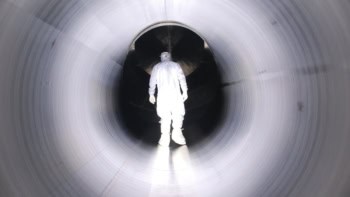Fifty years is a long time in particle physics – and not just because most subatomic particles only exist for tiny fractions of a second. In 1954, the year that CERN was established, the leading high-energy laboratories in the US, and indeed the world, were at Berkeley in California and Brookhaven in New York. Today these two labs – with nine Nobel prizes for discoveries in particle physics between them – have been replaced by Stanford (established in 1962) and Fermilab (1967) as the focal points of high-energy physics in the US.
Berkeley and Brookhaven are now broader-based labs with activities in many areas outside physics, although they still have substantial particle-physics programmes. The same cannot be said of the short-lived Superconducting Super Collider in Texas, which was cancelled while still in its construction phase in 1993. Staying in business as a particle-physics lab for 50 years – as CERN has done – is therefore quite an achievement. Next in line to celebrate such a feat will be the DESY lab in Germany, which was founded in 1959, although the KEK lab in Japan can trace its roots back to 1955.
However, CERN did not reach its current position of strength overnight. In the early years it struggled as US labs dominated the field and beat Europe’s new lab to the big discoveries. The tide turned with the detection of weak neutral currents in 1973, and the discovery of the W and Z bosons 10 years later showed that CERN was capable of making truly massive discoveries. As Robert Crease explains in the first article of this special issue “CERN: 50 years and counting”, the Geneva lab’s success in the competition to find the W and the Z was an essential forerunner to an era of true collaboration between particle physicists in Europe and the US (see “CERN, the US and the W”).
Today, completing the Large Hadron Collider (LHC) and its four detectors on schedule and within budget, and then ensuring that they run reliably from 2007 onwards, are CERN’s top priorities (see “To the LHC and beyond”). The LHC is set to dominate particle physics for at least a decade. However, non-LHC research has been scaled back in recent years and the lab needs to broaden its programme and build on its strengths in nuclear physics, neutrinos and anti-atoms.
Returning to the LHC, in “The LHC detector challenge” Tejinder Virdee describes the monumental challenges involved in designing and building the ATLAS and CMS detectors for the project. The huge volumes of data generated in the proton-proton collisions at the LHC – and the associated radiation – will place enormous strains on both the detectors themselves and the computational “Grid” used to analyse the data. (For more details on the LHC itself see “Particle accelerators: to the LHC and beyond”).
First on the agenda for ATLAS and CMS will be finding the Higgs boson and, it is hoped, supersymmetric particles or some other new physics beyond the Standard Model. Although this model has been able to explain the results of all accelerator experiments so far, physicists know that it cannot be the full story, as Luciano Maiani explains (see “CERN: the next 50 years”). Of course, high-energy physics is about people as well as particles, and Tiziano Camporesi outlines the many career options available to the graduates of the student “factories” at labs like CERN.
So what does the future hold besides the LHC? The particle-physics community is keen to build a linear electron-positron collider and has just selected superconducting technology developed at DESY for this project. However, CERN has started to question this consensus by throwing its CLIC approach – which could reach higher energies but has still to prove its feasibility – into the mix. Other labs are unlikely to allow any future linear collider to be built at CERN without a fight. The next 10 years are set to be as interesting as the last 50.




